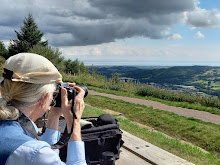The "Bielgee" dance, or dance of the body, is particular to the people of western Mongolia. It is performed to the music of Mongolian national musical instruments, such as the morin khuur (horsehead fiddle) and the yochin (similar to the xylophone.) Bielgee is traditionally performed on the rather limited space before the hearth, so the dancers make practically no use of their feet. Instead, the dancers principally use only the upper part of their bodies, and through their rhythmic movements express various aspects of their identities, such as sex, tribe, and ethic group.
Bielgee is a descriptive dance, actually a pantomime,with the dancer acting several scenes from everyday life of herders, such as milking the cow, cooking, hunting, etc. Originally, Bielgee was improvised, although the themes were set. Only much later did it become strictly regimented compositionally, with a firmly established sequence of scenes. Also, over time, Bielgee was performed in a variety of locations, including festivals in herders' tents, ceremonies by local dignitaries, and monasteries.
